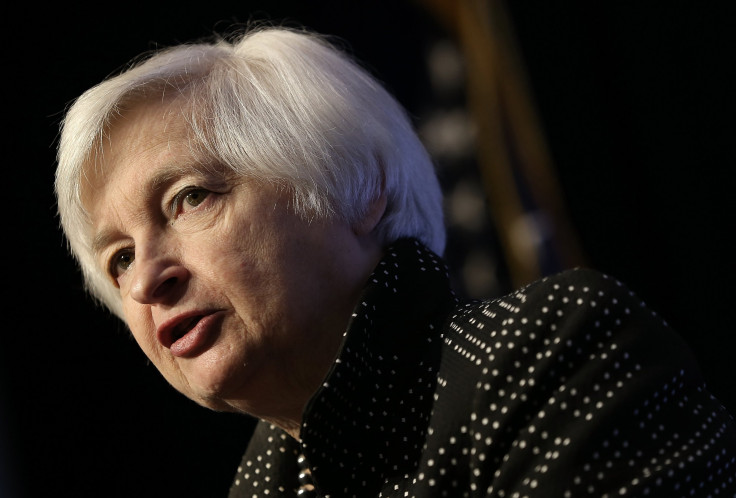Fed Decision: Policymakers Hold Rates Steady, Slash Outlook For Further Rate Hikes

The U.S. Federal Reserve held interest rates unchanged Wednesday at the conclusion of a two-day meeting, but slashed its outlook for further rate hikes. The Fed now sees two rate increases this year rather than four.
"A range of recent indicators, including strong job gains, points to additional strengthening of the labor market. Inflation picked up in recent months," the Fed said in the statement accompanying its decision in which it kept the target range for its overnight lending rate at 0.25 percent to 0.50 percent.
"However, global economic and financial developments continue to pose risks" and will keep inflation low for the remainder of 2016, it said.
"The Fed struck a very dovish tone, marking down its projected rate increase trajectory, while noting overall resilience in the U.S. economy and the absence of inflation pressures," said Brian Dolan, head market strategist at DriveWealth LLC in New Jersey.
The median rate hike projection after the Fed's December policy meeting was for four quarter-point increases in 2016, but Wednesday's new projections from the Fed show officials now expect two interest rate increases this year.
During Fed Chair Janet Yellen's press conference on Wednesday afternoon she noted inflation has picked up in recent months, particularly in volatile sectors such as energy and food prices, adding that it remains to be seen if this firming will be sustained.
Once these transitory influences fade and as the labor market strengthens further “the Committee expects inflation to rise to 2 percent over the next two to three years," she said.
That Fed’s dilemma was captured in economic data early on Wednesday. Consumer prices, excluding the volatile gasoline and food components, rose in February at the fastest annual rate in nearly four years, while wages remained stagnant and industrial production fell.
The central bank, which hiked rates in December for the first time in nearly a decade, sounded a cautious note at its last policy meeting in January, amid a selloff on financial markets, weaker oil prices and falling inflation expectations.
In January, the Fed deferred altogether from characterizing the risks facing the U.S. economy and its own policy outlook, as unease grew over the potential spillover from slowing economies in China and Europe.
But a recent batch of strong U.S. economic data, including unexpectedly faster job growth in February, has eased fears that those foreign headwinds, and the tighter financial conditions they sparked, could derail the U.S. economy.
The unemployment rate -- at 4.9 percent in February -- is near the level many Fed officials believe represents full employment.
Inflation also has shown signs of stabilizing, with one measure published by the Dallas Fed rising to 1.9 percent, just shy of the Fed's medium-term 2 percent target.
The Labor Department reported on Wednesday that its Consumer Price Index continued to be dragged down last month by low gasoline prices. But prices for less volatile goods rose a healthy 2.3 percent in the 12 months through February, the largest gain since May 2012.
"The Fed can't stay on the sidelines for much longer," Steve Murphy, U.S. economist for Capital Economics, wrote in an analysis of the latest inflation data.
The European Central Bank's decision last week to further ease monetary policy also may make the Fed more confident that action has been taken to underpin growth in Europe, helping ensure a stalling of the global growth drag on the home front.
© Copyright Thomson Reuters 2024. All rights reserved.




















